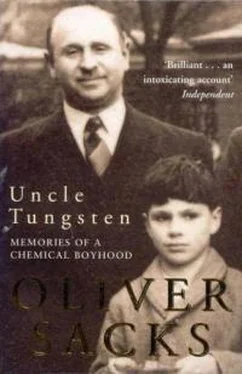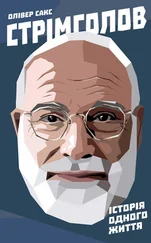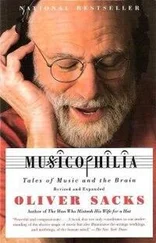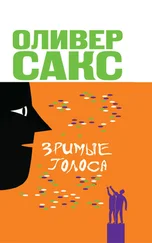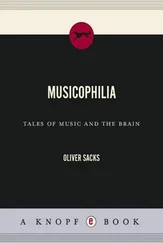All of Lavoisier’s enterprises – the algebraic language, the nomenclature, the conversation of mass, the definition of an element, the formation of a true theory of combustion – were organically interlinked, formed a single marvelous structure, a revolutionary refounding of chemistry such as he had dreamed of, so ambitiously, in 1773. The path to his revolution was not easy or direct, even though he presents it as obvious in the Elements of Chemistry; it required fifteen years of genius time, fighting his way through labyrinths of presupposition, fighting his own blindnesses as he fought everyone else’s.
There had been violent disputes and conflicts during the years in which Lavoisier was slowly gathering his ammunition, but when the Elements was finally published – in 1789, just three months before the French Revolution – it took the scientific world by storm. It was an architecture of thought of an entirely new sort, comparable only to Newton’s Principia . There were a few holdouts – Cavendish and Priestley were the most eminent of these – but by 1791 Lavoisier could say, ‘all young chemists adopt the theory and from that I conclude that the revolution in chemistry has come to pass.’
Three years later Lavoisier’s life was ended, at the height of his powers, on the guillotine. The great mathematician Lagrange, lamenting the death of his colleague and friend, said: ‘It required only a moment to sever his head, and one hundred years, perhaps, may not suffice to produce another like it.’
* * *
Reading of Lavoisier and the ‘pneumatic’ chemists who preceded him stimulated me to experiment more with heating metals and making oxygen, too. I wanted to make it by heating mercuric oxide – the way Priestley had first made it in 1774 – but I was afraid, until the fume cupboard was installed, of toxic mercury fumes. Yet it was easy to prepare simply by heating an oxygen-rich substance such as hydrogen peroxide or potassium permanganate. I remember thrusting a glowing wood chip into a test tube full of oxygen and seeing how it flared up, flamed with an intense brilliance.
I made other gases, too. I decomposed water, using electrolysis; and then I recomposed it, sparking hydrogen and oxygen together. There were many other ways of making hydrogen with acids or alkalis – with zinc and sulphuric acid or aluminium bottle caps and caustic soda. It seemed a shame to have this hydrogen just bubble off and go to waste, so to stopper my flasks, I got tight-fitting rubber bungs and corks, some with holes in the middle for glass tubes. One of the things I had learned in Uncle Dave’s lab was how to soften glass tubing in a gas flame and gently bend it to an angle (and, more excitingly, to blow glass as well, gently puffing into the molten glass to make thin-walled globes and shapes of all sorts). Now, using glass tubing, I could light the hydrogen as it emerged from the stoppered flask. It had a colorless flame – not yellow and smoky like the flames of gas jets or the kitchen stove. Or I could feed the hydrogen, with a gracefully curved piece of glass tubing, into a soap solution to make soap bubbles filled with hydrogen; the bubbles, far lighter than air, would rush up to the ceiling and burst.
Occasionally I would collect hydrogen over water in an inverted trough. Holding the trough, still inverted, I could put this over my nose and breathe it in – it had no smell, no taste, there was no sensation whatever, but my voice would go all high and squeaky for a few seconds, a Mickey Mouse voice I could no longer recognize as my own.
I poured hydrochloric acid over chalk (though even a mild acid like vinegar would do), producing an effervescence of a different, much heavier gas, carbon dioxide. I could collect the heavy, invisible carbon dioxide in a beaker and see how a tiny balloon of air, much less dense, floated on it. Our fire extinguishers at home were filled with carbon dioxide, and these, too, I used occasionally for the gas.
When I filled a balloon with carbon dioxide, it sank to the floor heavily and stayed there – I wondered what it would be like to have a balloon filled with a really dense gas, xenon (five times denser than air). When I mentioned this to Uncle Tungsten, he told me of a tungsten compound, tungsten hexafluoride, which was nearly twelve times denser than air – it is the heaviest vapor we know of, he said. I had fantasies that one might find or make a gas as heavy as water, and bathe in it, float in it, as one floated in water. There was something about floating – floating and sinking – that continually exercised and energized me. [19] More than fifty years later (for my sixty-fifth birthday), I was able to gratify this boyhood fantasy, and had, besides the normal helium balloons, a few xenon balloons of astonishing density – as near to ‘lead balloons’ as could be (tungsten hexafluoride, though denser, would have been too dangerous to use – it is hydrolyzed by moist air, producing hydrofluoric acid). If one twirled these xenon balloons in one’s hand, then stopped, the heavy gas, by its own momentum, would continue rotating for a minute, almost as if it were a liquid.
I was mesmerized by the giant barrage balloons that floated overhead in wartime London, looking like vast aerial sunfish, with their plump, helium-filled bodies and trilobed tails. They were made of an aluminized fabric, so they gleamed brilliantly when the sun’s rays hit them. They were attached to the ground by long cables, which (it was thought) could entangle enemy warplanes, prevent them from flying too low. The balloons were our giant protectors as well.
One such balloon was tethered in our cricket field, in Lymington Road, and this became the object of my special, ardent attentions. I would steal over from the cricket pitch when nobody was looking and touch the gently swelling, shining fabric softly; the balloons appeared only half-inflated on the ground, but when they reached their proper altitude in the air, the helium inside them expanded, swelled them out fully. I loved the feel of the giant balloons, a feel which was doubtless half-erotic, although I did not realize this at the time. I often dreamed of the barrage balloons at night, imagining myself cradled, at peace, in their giant soft bodies, suspended, floating, far above the cluttered world, in a timeless empyrean ecstasy. Everyone, I think, was fond of the balloons – their straining upwards stood for optimism, made the heart beat faster – but for me the balloon in Lymington Road was special: it recognized and responded to my touch, I imagined, trembled (as I did) with a sort of rapture. It was not human, it was not animal, but it was in a sense animate; it was my first love object, the precursor, when I was ten.
11. Humphry Davy: A Poet-Chemist
Ifirst heard Humphry Davy’s name, I think, a little before the war, when my mother took me to the Science Museum, up to the top floor, where there was a model of a coal mine, its dusty galleries lit by feeble lamps. There she showed me the Davy safety lamp – there were several models of this – and explained to me how it worked, and how it had saved innumerable lives. And then she showed me, next to it, the Landau lamp, invented in the 1870 sby her father – basically an ingenious modification of the Davy one. Davy was thus identified in my mind as an ancestor of sorts, almost part of the family.
Born in 1778, Davy grew up at the beginning of Lavoisier’s revolution. It was an age of discovery, the coming-of-age of chemistry – a time, too, when great theoretical clarifications were emerging. Davy, an artisan’s son, was apprenticed to a local apothecary-surgeon in Penzance, but soon aspired to something larger. Chemistry, above all, started to attract him. He read and mastered Lavoisier’s Elements of Chemistry – a remarkable achievement for an eighteen-year-old with little formal education. Grand (perhaps grandiose) visions started revolving in his mind: Could he be the new Lavoisier, perhaps the new Newton? (One of his notebooks from this time was labeled ‘Newton and Davy.’)
Читать дальше
